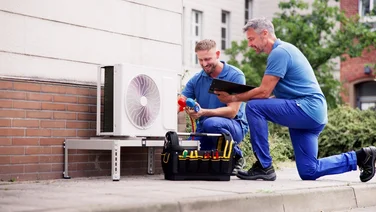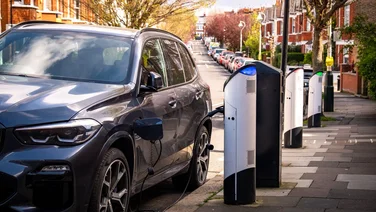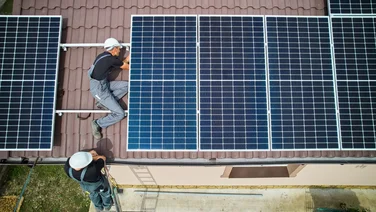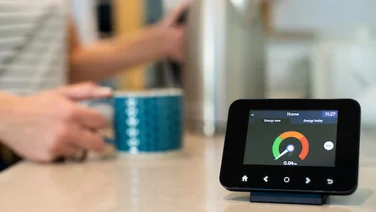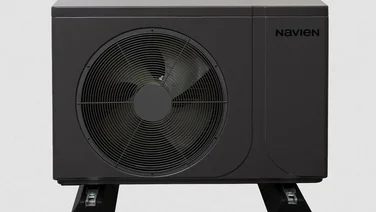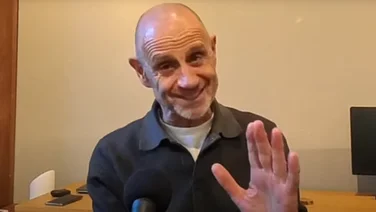The UK recycles just 45% of its waste
Increasing this recycling rate would save million of tonnes of CO2e
Composting is the most environmentally friendly way to reduce food waste
Recycling is a simple way to fight climate change and reduce waste.
Landfills in the UK release 14.2 million tonnes of CO2e* per year the equivalent of 2.7 million peoples emissions transforming resources that could be reused into perpetrators of climate chaos.
The UK currently recycles less of its waste than Slovenia, Taiwan, and Austria, according to the Organisation for Economic Co-operation and Development (OECD).
In food waste alone, 9.52 million tonnes is squandered each year but you can help to change all of that.
And were going to explain how.
* carbon dioxide equivalent, a measurement that converts all greenhouse emissions into CO2 terms
Recycling at home checklist
Before you start making the world a better place from your own home, you should ensure you’re familiar with all the ways to make it as easy as possible.
So heres everything you need to do, in four simple steps:
Enter your postcode on Recycle Now, a government-supported, charity-run initiative that will tell you what, how, and where you can recycle rubbish in your local area.
With these local capabilities in mind, make a list that shows what you can and cant recycle, and put it above or on every bin you own. Thisll make it easy for everyone in your home to recycle.
Make sure you have an indoor recycling point. Whatever your situation, make sure theres at least one place where all members of your household can drop recycling.
Ensure your recycling is relatively clean, dry, and empty.
What things can and cant you recycle at home?
Recycling rules can be hard to navigate, but with a little help, the whole process becomes easy enough.
Heres a guide to what is and isnt allowed into UK recycling plants, and some quick tips on what youll need to do to make sure your recyclables are accepted.
And remember: if you have old items with practical uses, like gardening tools, kitchenware, or childrens toys, you can recycle them by giving them to someone else, or to a charity shop.
How to recycle card and cardboard
- Remove tape, polystyrene, and any plastic from cardboard packaging
- Remove any glitter, badges, or batteries from greeting cards
- You can also compost egg boxes, kitchen towel rolls, and toilet rolls
| Yes | No |
|---|---|
| Cardboard envelopes and boxes (e.g. delivery boxes and cereal boxes) | Card stained with food, grease, paint, dirt, etc. |
| Corrugated cardboard | Food and drink cartons (except Tetra Paks) |
| Greetings cards without glitter | Greetings cards with glitter |
| Egg boxes | |
| Brown paper |
How to recycle metal
- Empty and clean out anything with food or drink
- You can leave labels on, as theyre removed later in the process
- Leave metal lids and caps on glass containers to be recycled with glass
| Yes | No |
|---|---|
| Cans of drink | Laminated foil (if it springs back when you scrunch it up, it cant be recycled) |
| Food tins, including biscuit and chocolate tins | Crisp packets and sweet wrappers |
| Aerosols (but recycle plastic caps with plastics) | Metal containers for chemicals (e.g. engine oil, paint, and white spirits) |
| Aluminium foil (but scrunch it up to reduce space) | Kitchen gear (e.g. cutlery, pots, and pans) |
| Aluminium foil trays | Kettles, irons, pipes |
| Aluminium tubes (but recycle plastic caps with plastics) | White goods (e.g. fridges and dishwashers) |
How to recycle paper
- Just like foil, if you scrunch up paper and it doesn’t spring back, it can be recycled
- Remove any plastic wrapping
- Try to keep paper unstained, as its only recyclable if its clean
| Yes | No |
|---|---|
| Brochures, catalogues, and magazines | Wallpaper |
| Brown paper, but put it with card | Sticky papers like post-it notes |
| Envelopes (including ones with a window) | Paper stained with food, grease, paint, dirt, etc. |
| Junk mail and flyers | Used paper towels |
| Newspapers | Anything thats not actually paper (e.g. sanitary towels, tissues, and wet wipes) |
| Shredded paper | |
| Telephone directories | |
| White paper |

How to recycle plastic
- Put plastic lids back on bottles and push straws back into cartons, to ensure they make it through the recycling process
- Squash plastic bottles as much as you can, to save space and stop them rolling off sorting conveyor belts
- Clean out your plastic recycling. It doesnt have to be completely spotless, but a stray half-container of peanut butter or orange juice can spill and contaminate an entire load
- Leave any labels on
- A useful general rule is that if you can stretch it, it can be recycled
- You can recycle anything which has the familiar looping triangle of arrows containing a four, but dont recycle anything that has a three or five inside the triangle

Want to learn more about what plastic recycling symbols mean? Read our handy guide.
Plastic bottles
| Yes | No |
|---|---|
| Clear and coloured household plastic bottles | Plastic bottles that have contained dangerous chemicals (e.g. antifreeze) |
| Detergent and soap bottles (but not the pump) | |
| Detergent and soap bottles (but not the pump) | |
| Cleaning product bottles (the spraying mechanism can be left in) | |
| Skin care bottles | |
| Shampoo and shower gel bottles | |
| Drinks bottles (including fizzy drinks) | |
| Milk bottles | |
| Plant food and pesticide bottles |
Want more plastic bottle facts? Check out our article on plastic bottle waste.
Plastic film
| Yes | No |
|---|---|
| All plastic bags, except biodegradable and compostable bags | Cling film |
| Bread bags | Food and drink pouches |
| Cereal bags | Bakery wrappers |
| Shrink wrap and ring joiners in drink multipacks | Film lids from trays and pots (e.g. yoghurt pots) |
| Frozen food bags | Crisp packets |
| Bags that cover new or dry-cleaned clothes | Compostable bags (compost them instead) |
| Magazine and newspaper wrappers | Biodegradable film |
| Fruit and vegetable bags | Ready-made salad bags |
| Bubble wrap |
How to recycle organic waste
- Ask your local authority if they can give you a kitchen caddy to collect food waste, and put cooked or raw food scraps in there
- Also ask your local authority for a garden waste bin, and follow any specific instructions they give you for it
- If you dont get a special garden waste bag, use a stronger bag than a black bin liner, and avoid overfilling it this way, it wont tear, and you can use it again
- Remove all packaging from food waste particularly plastic
- If you can compost at home, do it its the most environmentally friendly option
Food waste
| Yes | No |
|---|---|
| All food, even if its mouldy or out-of-date | Liquids (e.g. milk), as they can leak during transportation |
| Tea bags and coffee grounds | |
| Inedible/rarely eaten food by-products (e.g. egg shells, fish and meat bones, and fruit and vegetable peelings) | |
| Small amounts of cooking oil and fats not enough that it could leak (throw the rest in the bin) |
Garden waste
| Yes | No |
|---|---|
| Grass and leaves | Anything inorganic (e.g. tools) |
| Flowers and weeds | |
| Tree bark | |
| Twigs and pruned branches | |
| Homegrown fruit and vegetables |
How to recycle clothes
- All clothes can be recycled, either so other people can wear them, or so they can be turned into different items like blankets, cloths, and seat padding
- Check if your local authority collects clothes to recycle them
- If not, look up your nearest recycling point or clothing and textile banks, which are usually in car parks and outside supermarkets and retailers
- You can also use the Charity Retail Associations search tool to find your nearest charity shop that accepts clothes
- Some charities like the British Heart Foundation will even come to your home to collect clothes
| Yes | No |
|---|---|
| All clothing, in whatever state |
How to recycle batteries
- Check if your council collects batteries with the rest of your recycling
- In most cases, youll have to drop them off at a recycling centre or collection point
- Use rechargeable batteries powered by renewable energy whenever possible
| Yes | No |
|---|---|
| All batteries in your home, including the ones in watches, laptops, mobiles, power tools, and remote controls | |
| Car batteries (take them to a collection point) |
Next steps
Recycling is an important step in the process of fighting climate change from home. If everyone recycled, wed eliminate millions more tonnes of greenhouse gases.
But like so many other massive processes, its imperfect.
For instance, plastic can only be recycled once or twice before it loses its structure entirely, so as well as recycling it, try to avoid buying plastic as much as possible.
And just because you put your waste in the recycling, doesnt mean itll be recycled. 11% of the rubbish collected for recycling every year is burned in incinerators that release 12.6 million tonnes of CO2 annually.
So recycle as much as possible, but take further steps as well: switch to a green energy supplier if you can, consider getting solar panels, and follow our tips to use less electricity and water. Read more: Are Solar Panels Worth It?

